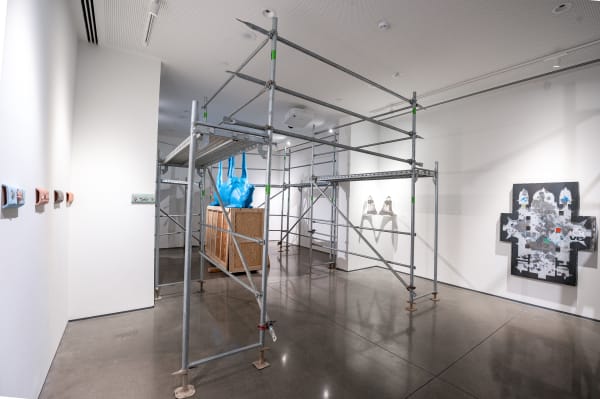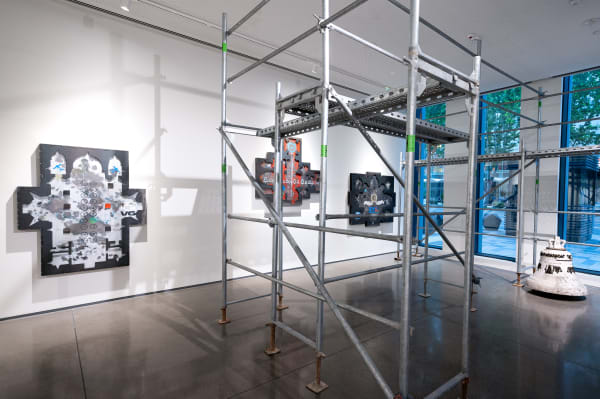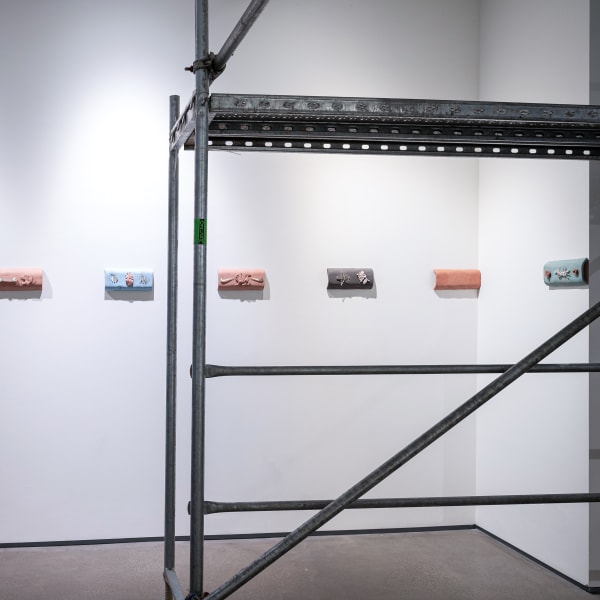Qujai is no longer it.: Mishiko Sulakauri
The once famed Persian Kurdish steed, Qujai, belonging to King David IV, 'the Builder', turned on its head, the horse laments the slow fading of its glory and heroism. It is a metaphor for ailing monuments and brittle subterranean layers of history that lie undiscovered and threatened with ruin.
Heritage sites that serve as sustenance for the cultural identity of people across the social strata of Georgia, secular and religious, urbanite and rural alike, hold varied meanings, limitations and evolve in various ways. Engaging with Georgian Orthodox architecture, the exhibition reflects upon power dynamics and the notion of selective acceptance of the 'new'. Guided by their lived experiences, people attribute different values to these cultural sites. That, which guides and governs architectural and aesthetic decisions and informs the structural evolution of these spaces, concurrently affects societal transformation and vice versa.
Contemplating how these monuments are fabricated, replicated, and innovated, the artist looks to the addition of bell towers to religious architecture in the late XIII and early XIV centuries alongside the more recent and stark changes, such as the introduction of electricity and machinery.
He develops personal iconography by combining materials such as sterling silver and red clay with symbols ranging from pre-Christian numismatics and mythology to multi-national corporation logos and tools. The resulting visual language addresses themes of uncertainty, anxiety, sanctioned and unsanctioned change, luck and survival.













